Underwater Strobes and Connections
How Underwater Strobes Work
External strobes are an essential part of an underwater photographers gear kit. Underwater strobes are flash guns that provide the necessary artificial light to compensate for the absorption of light underwater. Without strobes, underwater images are generally plagued with a dull blue hue.
The in ternal flash on a point & shoot camera is not considered a strobe, and is not very useful for most shooting scenarios. The output is weak and the position of the flash close to the lens creates backscatter, the illumination of the small particulate matter in the water between your camera and the subject.
ternal flash on a point & shoot camera is not considered a strobe, and is not very useful for most shooting scenarios. The output is weak and the position of the flash close to the lens creates backscatter, the illumination of the small particulate matter in the water between your camera and the subject.
Strobes work by discharging light at various power settings. Technically, each power setting relates to a flash duration - the amount of time the bulb emits light, rather than a lower power emission of light. Generally, strobe duration is somewhere close to 1/1000 of a second, far shorter than the time your shutter would normally be open. The lower the power setting, the shorter the flash duration. Note that under ordinary circumstances, your camera and strobe can only sync at certain shutter speeds.
Strobes must recycle after each discharge. Recycle time is an important consideration when selecting a strobe. When a strobe recycles, the batteries transfer a high voltage charge to a capacitor, which dumps the charge into the flash tube when triggered. This is no different than the strobes used by studio photographers, only ours are waterproof.
One Strobe or Two?
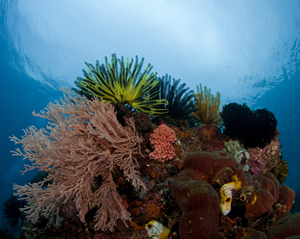
While underwater photography with one strobe is possible, you’ll need two strobes in order to produce rich colors, eliminate harsh shadows, and establish creative lighting. Using two strobes also gives you more options and more control over lighting angles, and general lighting quality. Some photographers even utilize three or more strobes to accomplish specific creative lighting techniques.
Unlike cameras and housings, innovation in strobe technology and the outdating of older models happens fairly slowly. So you can feel comfortable investing in the most powerful strobes that your budget allows, knowing that the investment will most likely last you for years to come.
Syncing Strobes & Cameras
Strobe connections are very important. These cords allow your camera and strobes to work in sync so that the emission of light from the strobe syncs with the camera shutter, creating the exposure you desire. Additionally it is important to understand that your camera and strobes may only sync within a specific range of shutter speeds (see high speed sync below).
The syn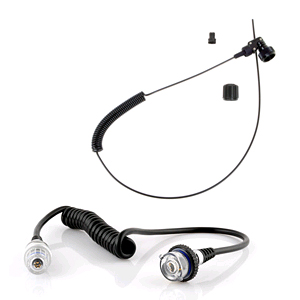 c system used depends primarily on the camera and housing you are shooting with. If you’re shooting with a compact point & shoot camera your strobe will most likely connect via a fiber optic cable, which is an optical “slave” triggered by the internal flash from the camera. While DSLR cameras have traditionally used electronic sync cords that attach to bulkhead connections on the housing, the trend seems to be moving towards fiber optic cables for DSLR's as well.
c system used depends primarily on the camera and housing you are shooting with. If you’re shooting with a compact point & shoot camera your strobe will most likely connect via a fiber optic cable, which is an optical “slave” triggered by the internal flash from the camera. While DSLR cameras have traditionally used electronic sync cords that attach to bulkhead connections on the housing, the trend seems to be moving towards fiber optic cables for DSLR's as well.
Compact cameras and DSLR cameras trigger and sync external strobes in very different ways. On land, compact cameras emit a “pre-flash”, which is a small burst of light that helps the camera’s sensor understand how much light is required for a good exposure prior to the actual shutter and flash release. Underwater however, syncing external strobes with compact systems is not as simple, but the actual process need not worry the photographer, who can rest assured that the manufacturers work around these nuances. Most digital strobes have circuitry that “speaks” to the camera, allowing for the proper level of light to discharge in order to capture a good exposure. The technical term for this is a TTL (through the lens) connection. Of course, TTL is not perfect and does not always achieve a perfect exposure. Often a quick look at the camera’s LCD screen and dialing down the strobes or changing the strobes’ position is the best option.
T he way that DSLR cameras sync with external strobes is far simpler. The hotshoe connection on the top of the camera connects to bulkhead connections on the housing, which connect to sync cords that are connected to the strobes themselves. Many of today’s strobe manufacturers have developed TTL adapters to work with the proprietary TTL technology from Nikon (iTTL) and Canon (eTTL). Olympus has developed a closed loop system between their cameras, housings and strobes as well. TTL is not perfect and as with compact cameras, often a quick look at the camera’s LCD screen and changing the power settings on the strobes, or changing strobe position, is the best option to achieve a correct exposure.
he way that DSLR cameras sync with external strobes is far simpler. The hotshoe connection on the top of the camera connects to bulkhead connections on the housing, which connect to sync cords that are connected to the strobes themselves. Many of today’s strobe manufacturers have developed TTL adapters to work with the proprietary TTL technology from Nikon (iTTL) and Canon (eTTL). Olympus has developed a closed loop system between their cameras, housings and strobes as well. TTL is not perfect and as with compact cameras, often a quick look at the camera’s LCD screen and changing the power settings on the strobes, or changing strobe position, is the best option to achieve a correct exposure.
High Speed Sync
If you read your strobe’s instruction manual it will probably state that your strobes will only sync when shooting at shutter speeds between 1/60 and 1/250. In reality you can still shoot at shutter speeds less than 1/60 and in most instances at shutter speeds higher than 1/250, but it depends on the combination of camera, housing and strobes. Anything beyond the stated maximum sync speed is considered shooting high speed sync. If the camera doesn’t realize the strobe is there, as is the case in most systems that do not have innate TTL connectivity, you can shoot away at any shutter speed. However, in some instances the tradeoff of built in TTL connectivity is a limitation on high speed sync.
Optical Slaves
For both point & shoot and DSLR cameras, you may be able to add an additional strobe using a cordless optical slave. These optical sensors trigger the strobe by detecting another strobe’s discharge. While having no cords sounds convenient, the trade off is inconsistency. Using optical slaves requires specific angles and proximity of the primary strobe. In addition, when shooting in bright ambient light, the optical slave cannot always “see” the primary strobe’s discharge and may not fire at all. Needless to say, this can limit the lighting potential. Many strobes have this slave sensor built into the unit. However, you can also buy an external slave sensor that can be attached to a cord for increased sensitivity and positioning.
Selecting Strobes That Are Right For You
 There is no “best” strobe, per se. All strobes can help you create well exposed and colorful images, so long as you understand how to work within the limitations of what your strobes can accomplish. Smaller strobes are great for macro and short distances, while larger subjects and wide angle scenes require more light output. Which strobes you choose comes down to how much macro versus wide angle you enjoy shooting, your camera’s connection type, and of course your budget.
There is no “best” strobe, per se. All strobes can help you create well exposed and colorful images, so long as you understand how to work within the limitations of what your strobes can accomplish. Smaller strobes are great for macro and short distances, while larger subjects and wide angle scenes require more light output. Which strobes you choose comes down to how much macro versus wide angle you enjoy shooting, your camera’s connection type, and of course your budget.
As stated previously, unlike cameras, strobes will not become outdated every 12 – 18 months. Do yourself a favor and pick up a pair of the most powerful strobes within your budget. Modern strobes have a wide range of power settings that will provide the versatility to properly light everything from super macro critters to ultra wide angle reef scenics. Keep in mind that due to the way that water absorbs light, even the most powerful strobes are only practically useful for a distance of a few feet.
Macro Lighting (Don’t Sweat The Small Stuff)
Truth be told, almost any strobe is powerful enough for macro photography. When shooting macro you are close to your subject and lighting is solely by strobe without the need to balance ambient light. Although most macro photography is shot at small apertures (higher f/stops) to maximize depth of field, more often than not you’ll find yourself shooting at less than full power. When shooting macro with larger strobes you will need to significantly dial down the power to prevent overexposing the image.
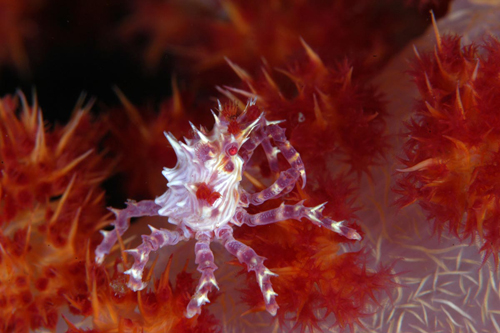
Wide Angle Lighting (When Size Matters)
Shooting wide angle requires additional power and a wider angle of coverage. The larger the guide number, the more powerful the strobe. Technically the Guide Number = f/stop x distance (specified in meters or feet) and is ordinarily expressed at ISO 100. So a guide number of 22 (ISO 100/meters) can expose a subject 1 meter from the camera at f/22, or 2 meters at f/11. These are guidelines and rated for shooting in air versus water, which of course yields a significantly lower effective underwater guide number due to absorption.

Power is but one consideration when selecting a strobe. A wide range of sizes, weight and battery types make traveling with some models easier than others. An advanced consideration is color temperature, which we address in the color temperature and white balance section.
Continue to Strobe Positioning
RELATED CONTENT
Featured Photographer

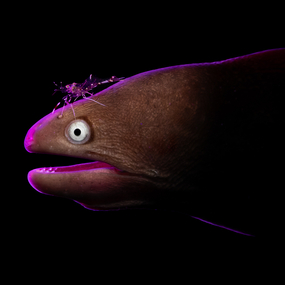
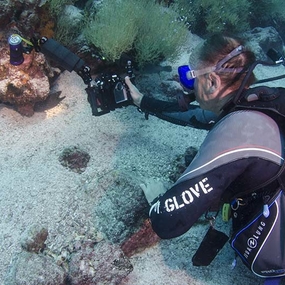
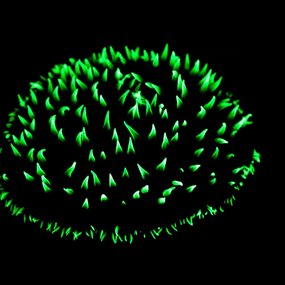


 Antarctica
Antarctica




